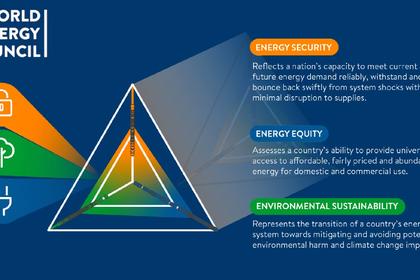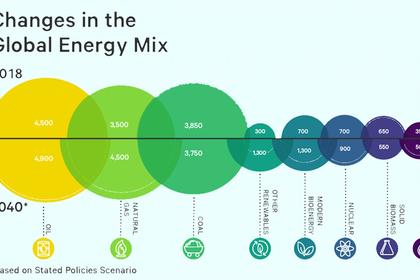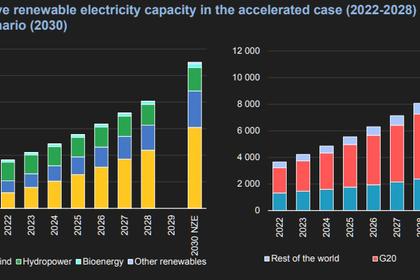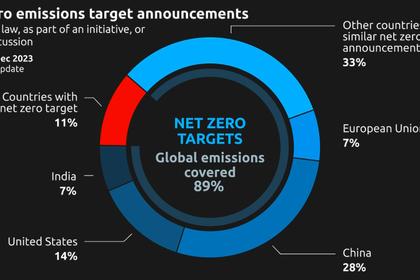
GIS FOR ENERGY NETWORKS

By Joel Stevens Utilities Delivery Director, Techwave Consulting
ENERGYCENTRAL - Nov 5, 2024 -
Executive Summary
In today’s rapidly evolving landscape, effective network management is crucial for industries such as electric, gas, water, and telecommunications. Geographic Information Systems (GIS) offer a transformative approach to managing these networks, providing a comprehensive, real-world model of assets and enabling better decision-making and operational efficiency. This white paper explores the challenges in traditional network management, the transformative power of GIS, and actionable strategies for successful implementation.
Introduction
Network management is critical for operational efficiency in utilities, but traditional methods often rely on outdated practices that result in inefficiencies and limited data visibility. GIS has emerged as a transformative tool, enabling utilities to model, manage, visualize, and analyze their networks in a rapidly changing environment. This integration not only enhances operational performance but also supports a more sustainable and customer-focused approach.
Challenges
Utilities today face numerous challenges that require innovative solutions. Traditional network management systems often struggle with:
- Legacy Systems: Outdated technology and lack of integration.
- Data Silos: Fragmented information across departments results in inconsistent data and communication gaps.
- Operational Inefficiencies: Manual processes and high operational costs.
Solutions
Leading utilities are leveraging GIS to address these challenges by:
- Migrating to Real-World Models: Building stronger systems of record by accurately modeling assets.
- Creating Systems of Engagement: Making information accessible to all stakeholders, fostering better collaboration and informed decision-making.
- Utilizing Powerful Analytics: Developing systems of insight and understanding through advanced analytics.
GIS is designed to model, manage, visualize, and analyze modern networks. This capability allows utilities to better manage their infrastructure and address emerging challenges, such as increasing customer demands and regulatory pressures.
Why GIS is a Game-Changer for Utility Networks
For utility companies managing complex infrastructure, GIS technology delivers critical, actionable insights that improve decision-making and streamline operations. The ability to visualize, analyze, and optimize network performance in real time offers unmatched value in today’s fast-paced, data-driven environment.
Key Benefits of GIS for Network Management:
- Improved Planning: GIS enables smarter, data-backed decisions that enhance network design and placement.
- Increased Efficiency: From faster repairs to optimized routing, GIS reduces operational costs and boosts productivity.
- Resilience and Reliability: GIS helps identify vulnerabilities, assess risks, and respond more effectively to disruptions, ensuring continuous service delivery.
- Customer-Centric Operations: Fewer service outages and faster issue resolution translate to higher customer satisfaction and loyalty.
- Sustainability: GIS promotes greener operations, from minimizing environmental impact during network expansion to optimizing energy use in field operations.
GIS is no longer just a mapping tool—it’s a vital part of a modern network management strategy. By integrating GIS into your operations, you can streamline network deployment, enhance operational efficiency, improve resilience, and drive customer satisfaction. Whether you're deploying new infrastructure, maintaining assets, or responding to a disaster, GIS provides the insights and tools you need to optimize performance and stay ahead in an increasingly complex utility landscape.
The Transformative Impact of GIS on Modern Network Management
A modern Geographic Information System merges the capabilities of mapping with robust data analytics, enabling network operators to create, manage, and analyze information through a geospatial lens. For telecommunications and utility sectors this geospatial insight is crucial for the effective management and maintenance of complex, decentralized networks.
Utility operators today face unprecedented complexity. GIS serves as a vital information hub, capable of representing a wide range of data geographically. This centralization of information facilitates better decision-making and operational efficiency.
The integration of GIS with work management applications significantly boosts productivity for various stakeholders:
- Field Crews and Design Engineers: Access to near real-time information empowers field teams to make informed decisions on the spot, enhancing workflow and reducing downtime.
- Back-Office Employees: By visualizing operational data on maps, these professionals can uncover patterns and insights that inform strategic planning and resource allocation.
- Customers: Open data portals provide customers with easy access to utility information, fostering community engagement and allowing for direct feedback.
- Executives and Officials: A unified operational picture enhances situational awareness, enabling more effective decision-making and resource management at the organizational level.
Additional Insights into the Impact of GIS:
- Predictive Analytics: GIS allows operators to analyze historical data and trends, facilitating predictive maintenance strategies that can prevent outages and reduce operational costs.
- Enhanced Emergency Response: By mapping infrastructure and overlaying risk factors (e.g., flood zones, fire hazards), GIS equips utility operators to develop robust emergency response plans, ensuring swift action during crises.
- Regulatory Compliance: GIS simplifies the process of meeting environmental regulations by visualizing the impact of utility operations on local ecosystems, aiding in compliance reporting and permitting processes.
- Asset Management Optimization: GIS provides detailed spatial insights into asset performance, allowing utilities to optimize maintenance schedules, extend asset lifespans, and improve overall service reliability.
- Community-Centric Planning: GIS empowers utilities to engage with the community in the planning process. By providing interactive tools for public input, utilities can better align their services with community needs and expectations.
- Sustainability Initiatives: GIS supports efforts to implement sustainable practices by allowing utilities to assess the environmental impact of their infrastructure projects, helping them to make more eco-friendly choices in resource management.
Embracing GIS for a Smarter, More Resilient Future
GIS is a transformative technology that fundamentally reshapes how utility networks are managed. By integrating GIS with existing systems and mobile applications, utilities can enhance productivity, improve operational efficiency, and foster greater community engagement. As the utility landscape continues to evolve, GIS will remain a cornerstone in driving innovation, enabling operators to meet the challenges of modern network management with confidence and agility.
In an increasingly digital and interconnected world, GIS has become a strategic asset for network operators. By providing actionable insights into network deployment, maintenance, sustainability, and resilience, GIS enables smarter, data-driven management practices that reduce costs, enhance reliability, and increase environmental responsibility.
Whether it’s supporting sustainable growth or equipping teams with real-time data, GIS empowers network operators to build stronger, more reliable infrastructures. As the demand for seamless connectivity continues to rise, embracing GIS is essential for staying competitive and resilient in the face of new challenges.
Effective management of utility infrastructure requires operators to think holistically about their networks. Operators need to not only know where their critical assets are but also understand the connections and relationships between those assets.
Conclusion
Modernizing network management through GIS is essential for industries to stay competitive and improve their operations. By adopting GIS solutions, organizations can enhance efficiency, improve decision-making, and better manage their networks in a secure and scalable manner. Embracing GIS technology is a critical step toward building resilient, efficient, and responsive utility infrastructures.
-----
-----
Earlier:

















